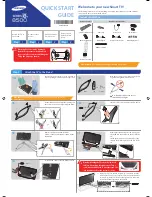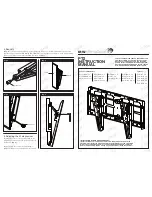
Important Information
3
Warning
This television weighs 57kg. Most of the weight is at the front of the television. Although the television has
been tilt tested and meets current Australian and International Standards, we recommend that great care
be taken when positioning the television.
*
Do not allow the front of the set to overhang the stand or cabinet.
*
Make sure that the stand or cabinet is flat and does not lean forward.
*
Do not allow anyone to climb or sit on the television.
*
Do not place any heavy weights on the television.
Picture Quality
All televisions are affected by Magnetic Interference.
Magnetic interference may come from such things as
unshielded motors, moving the TV while it is switched
ON, turning off a vacuum cleaner too close to the TV,
lightning strikes nearby or many other things.
The interference shows up as
coloured patches
that
appear while the TV is switched ON.
A typical result may look like the picture shown.
??
Your Panasonic Television is designed to overcome this with the inclusion of a demagnetising
(degaussing) function.
??
To activate this feature, simply switch your Television OFF with the Power On/Off Switch (not with
the remote control) for 30 minutes and then switch it back ON.
??
If the television is to be left unattended for extended periods (several days or more), turn the power
off to the unit. DO NOT leave in Standby mode.
??
This will ensure that you enjoy the picture clarity as it was meant to be.
Refer to page 31 for operating instructions for the GEOMAGNETIC feature.
Analogue and Digital television - what are they?
Analogue transmission is the system that has been used for many years for broadcasting television
programmes. With continuous improvements in technology it is now possible to transmit programmes in a
digital format, allowing clearer pictures, more stations and other services to be displayed on screen.
Digital television is provided in three different ways; it can be sent along a cable connection direct to your
house, broadcast from a satellite, or broadcast using traditional land based (terrestrial) transmitters. The
first two options require you to have an extra 'set top box' decoder and in the case of satellite, a receiving
dish mounted outdoors.
While allowing you to receive traditional analogue transmissions in the usual way, this television can also
receive terrestrial digital services using an integrated
(Digital Video Broadcasting) decoder. This
allows you to enjoy the new era of digital terrestrial television without the need for a 'set top box' or
satellite dish – a good roof mounted antenna is all you should need.
Trade Mark of the DVB Digital Video Broadcasting Project (1991 to 1996).
Registration number 2716
®
®




































